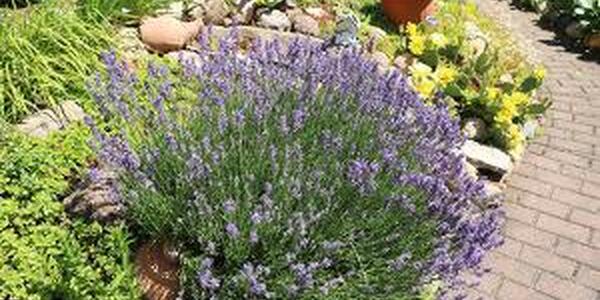Plant Choices
Choosing the right plants makes all the difference.
Be the envy of your neighborhood with landscape that looks good all year. Selecting the right plants is the key, especially if you're looking to conserve water in your landscape. Illinois Extension can guide you in the right direction.
Consider perennial native plants instead of lawns
Traditional lawns can require frequent watering to keep them looking lush. When possible, consider garden beds with perennial plants native to your region. Many have extensive root systems that help them survive long periods of dry weather, helping you to create a drought-resistant xeriscape garden. Once established, these gardens generally don’t require watering, saving you money while reducing the demand on natural resources.
Design for the area
For design inspiration, look to natural areas, although you may want to interpret your design for the property’s scale, which is likely smaller. One strategy is to emphasize an iconic feature, such as a mass planting of Prairie Dropseed with seasonal flowers, to represent a prairie. Another approach is to contain the bed with a defined border. Whatever your design, check local municipal or homeowner’s association ordinances to ensure compliance.
Tips for successful native plant installation:
- Know your property’s site conditions and select native plants that work best for them.
- Before digging, call JULIE at 811 or 800-892-0123 or visit www.illinois1call.com to place a local utility request. When you know it’s safe to dig, start by preparing your garden bed.
- If you are using small plugs, consider soaking them in a small bucket. It can be difficult to rehydrate them once they dry out.
- To plant, dig a hole as deep and a little wider than the pot the plant came in. If the plant is root-bound, cutoff the bottom ¼ inch of the roots to stimulate new growth. Place the plant in the hole and backfill with soil. Be sure the level of the plant’s soil matches the level of the ground around it.
- Add 2 to 3 inches of natural shredded mulch, leaving a circle approximately 2 inches in diameter of bare soil around the stem.
- Water your new plants every other day for two weeks if it doesn’t rain. After two weeks, additional watering may be necessary if the weather is hot and dry.
- Your native plant may not bloom in the first two years while it’s busy putting down deep roots. To have color during perennial establishment, you can intermingle them with annuals.
- Although native plants are often described as low maintenance, this does not mean no maintenance, especially in the first two years. During this critical time, expect to pull weeds and to maintain the mulch layer to discourage unwanted plants.


